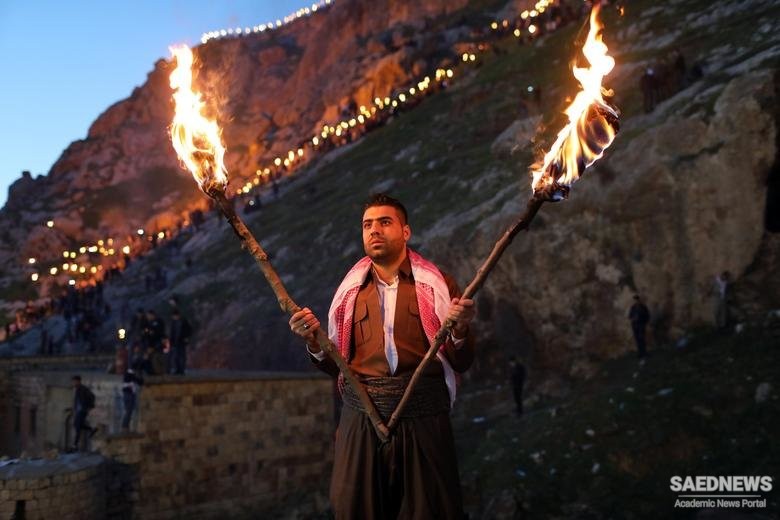There are a number of varieties of Kurdish, which are not mutually intelligible.
- Northern Kurdish (Kurmanji) is spoken in Turkey, Syria, northern Iraq and northwestern Iran by about 15-20 million people.
- Central Kurdish (Soranî) is spoken in Iraqi Kurdistan and the Kurdistan Province of Iran by about 6-7 million people.
- Southern Kurdish (Pehlewani) is spoken by about 3 million people in Kermanshah and Ilam provinces in northwestner Iran, and in the Khanaqin district in eastern Iraq
Status and use of Kurdish
Central Kurdish is an offical language in Iraq. along with Arabic.
Before 2002, there were many restrictions on the use of Kurdish in Turkey, especially in education and the media. However, since then then the use of Kurdish has gradually increased as most of these restrictions have been lifted. It is now used on radio and television, in schools, in local government, and on road signs.
In Iran Kurdish is recognized as a regional language. It is used in some local media, but not in public schools.
Written Kurdish
Kurdish began to appear in writing in a version of the Persian alphabet during the 7th century AD. However, for much of their history, the Kurds have prefered to use Arabic, Persian or Turkish for their literary works. The first well-known Kurdish poet was Ell Herirl (1425-1495), and Kurdish literature started to become popular during the 16th century.
Since 1932 Kurdish has been written with the Latin alphabet in Turkey and Syria. Before then, it was written with a version of the Arabic script. In parts of the former USSR it is written with a version of the Cyrillic alphabet, and in Soviet Armenia it was written with a version of the Armenian alphabet.
When Kurdish is written with the Arabic script, Arabic loan words retain their original spelling, though are often pronounced quite differently in Kurdish.
Armenian alphabet for Kurdish
Between 1920 and 1929 Kurdish was written with a version of the Armenian alphabet in Soviet Armenia.
Hawar Latin for Kurdish
This version of the Latin alphabet for Kurdish is known as the Hawar alphabet. It is was invented by Jeladet Ali Bedirkhan (1893-1951), and was presented in his magazine, Hawar in the 1932. It is the main alphabet used for Northern Kurdish, but is not recognised in Turkey.
Kurdish Unified Alphabet (Alfabéy Yekgirtú)
The Kurdish Unified Alphabet was devised by the Kurdish Academy of Language, and can be used to write all varieties of Kurdish.
Soranî alphabet
The Soranî alphabet for Central Kurdish was devised by Sa'íd Sidqi Kaban and Taufiq Wahby in the 1920s. It became the standardized form of written Kurdish used in Iran. It was also used in Iraq. The name Soranî comes from the Soran Emirate, a former Kurdish emirate that was located in the area now known as Iraqi Kurdistan.


 Kurdish Dialects
Kurdish Dialects














































